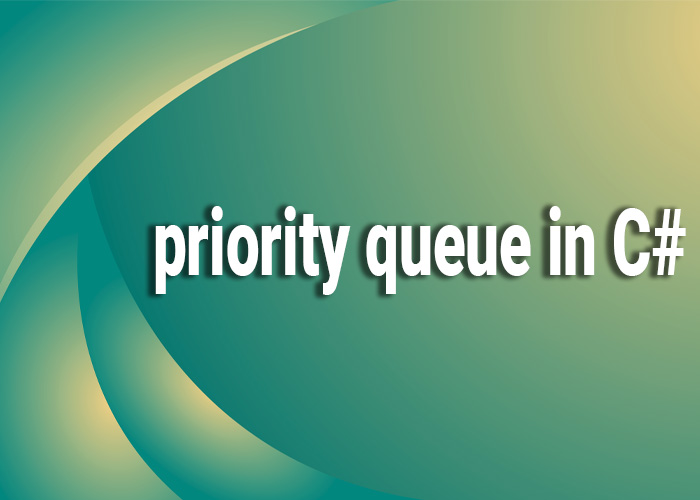Priority Queue in C#
A priority queue is an abstract data type in which each element is associated with a priority, and elements are served according to their priority. If two elements have the same priority, they are served according to their order in the queue. In C#, while the standard library prior to .NET 6 did not include a dedicated priority queue implementation, .NET 6 and later versions introduce the PriorityQueue<TElement, TPriority> class, providing a built-in option. This article explores how to implement and use a priority queue in C#.
Understanding Priority Queue
The PriorityQueue<TElement, TPriority> class manages a dynamically growing set of item-priority pairs. Elements are added with an associated priority, and the element with the highest priority is always dequeued first.
Key Features of PriorityQueue
- Generic Implementation: Like other generic collections, PriorityQueue<TElement, TPriority> allows you to define the type of the elements and the type of the priority.
- Automatic Sorting: Elements are automatically sorted based on their priority as they are added to the queue.
- Efficient Operations: Provides efficient enqueueing and dequeueing operations.
Implementing PriorityQueue in C#
Here is how to use the PriorityQueue<TElement, TPriority> in C#:
using System;
using System.Collections.Generic;
public class Example
{
public static void Main()
{
// Creating a priority queue
PriorityQueue<string, int> priorityQueue = new PriorityQueue<string, int>();
// Enqueue elements with priority
priorityQueue.Enqueue("Low priority task", 1);
priorityQueue.Enqueue("High priority task", 3);
priorityQueue.Enqueue("Medium priority task", 2);
// Dequeue elements
while (priorityQueue.TryDequeue(out string item, out int priority))
{
Console.WriteLine($"Task: {item} with Priority: {priority}");
}
}
}
Operations
- Enqueue(TElement, TPriority): Adds an element with a specified priority to the queue.
- Dequeue(): Removes the element with the highest priority.
- Peek(): Returns the highest-priority element without removing it from the queue.
- TryDequeue(out TElement, out TPriority): Tries to remove the highest priority element and returns a Boolean that indicates whether the operation was successful.
Use Cases for Priority Queues
- Simulation Systems: Managing tasks in simulation systems where certain actions must take precedence based on dynamic conditions.
- Operating Systems: Task scheduling in operating systems where processes are prioritized.
- Network Traffic Management: Managing network packets where certain packets need to be prioritized for quality of service.
Conclusion
The PriorityQueue<TElement, TPriority> class in C# provides a robust and efficient way to manage a collection of prioritized elements. By leveraging this class, developers can implement complex data handling routines that require elements to be processed based on their importance or urgency.





